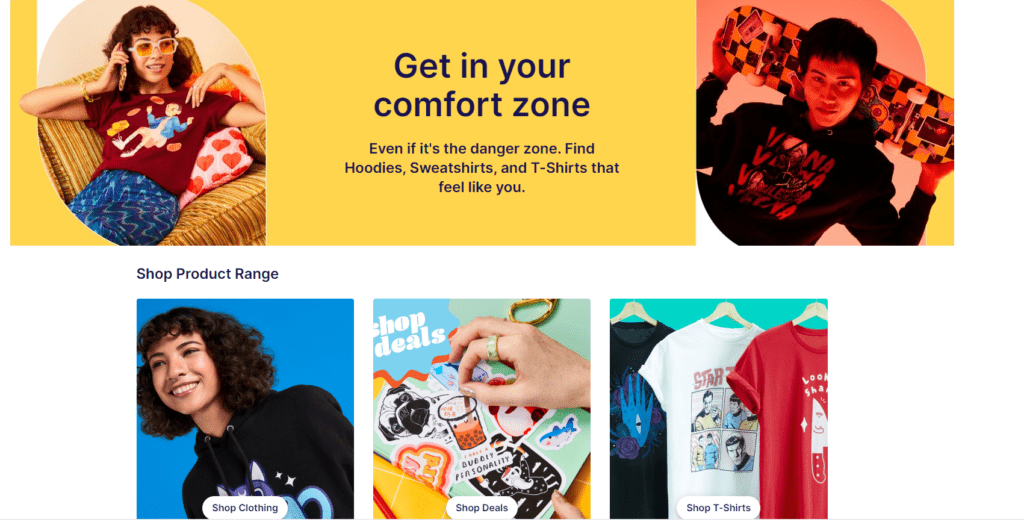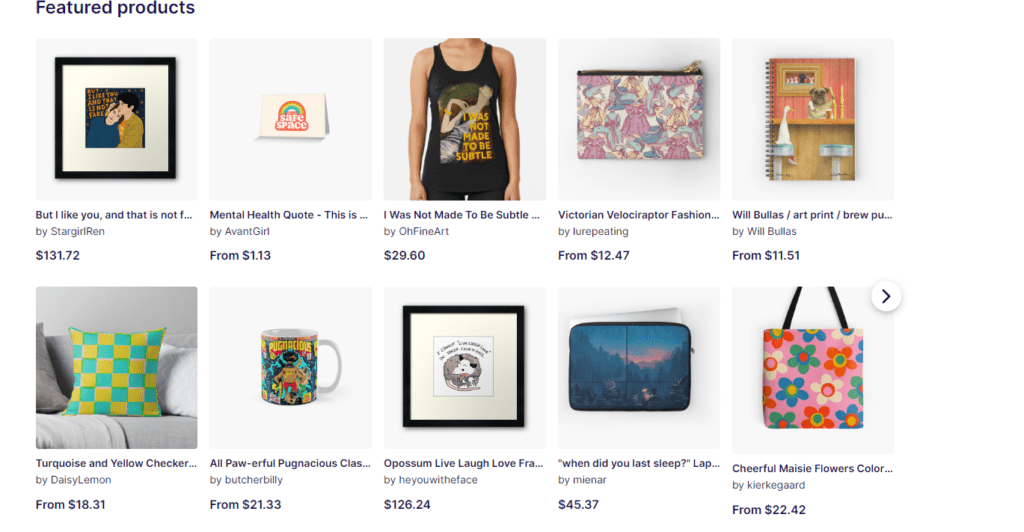RedBubble is a popular online marketplace that allows artists and designers to sell their artwork and designs on various products. From clothing and accessories to home decor and stationery, RedBubble offers a wide range of products that can be customized with unique designs. If you’re an artist or a creative individual looking to monetize your talent, this ultimate guide will provide you with valuable insights and tips on how to sell on RedBubble successfully.
Section 1: Understanding RedBubble: What You Need to Know
What is RedBubble?
RedBubble is an online marketplace that connects artists and designers with customers who appreciate unique and original artwork. It provides a platform for artists to showcase their creativity and sell their designs on various products, including clothing, accessories, home decor, and more.
How does RedBubble work?
RedBubble operates on a print-on-demand business model. When a customer places an order for a product with your design, RedBubble takes care of the printing, production, and shipping processes. This means you don’t have to worry about inventory management or fulfillment logistics.
Related articles : 5 Ways To Make Money On Pinterest Without A Blog
Benefits of selling on RedBubble
Selling on RedBubble offers several advantages for artists and designers. Some of the key benefits include:
- Global Reach: RedBubble has a large customer base from all around the world, giving you the opportunity to reach a wide audience.
- Easy Setup: Setting up a RedBubble store is quick and straightforward, allowing you to start selling your designs in no time.
- Product Variety: RedBubble offers a diverse range of products, allowing you to showcase your designs on various items to cater to different customer preferences.
- Passive Income Potential: Once your designs are uploaded and available for sale, you can earn passive income as customers discover and purchase your products.
- Community Engagement: RedBubble has an active community of artists and customers, providing opportunities for networking, collaboration, and inspiration.

Section 2: Creating Your RedBubble Account
Signing up for RedBubble
To get started on RedBubble, you need to sign up for an account. Visit the RedBubble website and click on the “Sign Up” button. You can create an account using your email address or sign up with your existing Google or Facebook account.
Setting up your artist profile
Once you’ve created your RedBubble account, it’s essential to set up your artist profile. Add a profile picture and write a brief bio that highlights your artistic style and influences. A well-crafted artist profile helps potential customers connect with you and your work.
Uploading your artwork
To sell on RedBubble, you need to upload your artwork and apply it to the available product templates. RedBubble provides clear guidelines on the image resolution and file formats to ensure optimal print quality. Take your time to prepare high-quality files that represent your designs accurately.
learn also : Jasper Affiliate program 2023 – How to Make $1000 Per Month
Section 3: Designing and Optimizing Your Products
Choosing the right products to sell
When selecting products to sell on RedBubble, consider your target audience and the suitability of your designs for different items. Experiment with various products such as t-shirts, phone cases, stickers, and wall art to cater to different customer preferences and maximize your sales potential.
Creating high-quality designs
To stand out on RedBubble, focus on creating unique and eye-catching designs. Invest time in honing your artistic skills and developing a signature style that sets you apart from the competition. Consider the current trends and customer preferences while staying true to your artistic vision.
Optimizing your designs for RedBubble
RedBubble provides design guidelines and templates for each product category. Ensure that your designs are aligned correctly and consider how they will appear on different-sized products. Test your designs on various items to ensure they look visually appealing and well-suited for each product type.

Section 4: Pricing and Profit Margin Strategies
Understanding pricing options on RedBubble
RedBubble offers different pricing options, including base prices and markup percentages. The base price covers the production and fulfillment costs, while the markup determines your profit margin. Familiarize yourself with RedBubble’s pricing structure and consider the perceived value of your designs when setting your prices.
Setting competitive prices
While it’s important to price your products competitively, avoid undervaluing your work. Take into account factors such as the complexity of your designs, market demand, and the quality of the products offered by RedBubble. Find a balance between attracting customers with reasonable prices and ensuring your efforts are adequately rewarded.
Maximizing your profit margin
To maximize your profit margin on RedBubble, consider implementing strategies such as offering discounts on bulk purchases, creating design collections, or leveraging seasonal trends. Monitor your sales data and adjust your pricing and marketing strategies accordingly to optimize your earnings.
Also Learn : How To Make Money With Canva (8 Easy ways)
Section 5: Promoting Your RedBubble Store

Leveraging social media platforms
Utilize the power of social media to promote your RedBubble store and reach a broader audience. Create engaging content related to your designs, share behind-the-scenes glimpses into your creative process, and interact with your followers. Platforms like Instagram, Facebook, and Pinterest can be effective in driving traffic to your store.
Collaborating with influencers and bloggers
Partnering with influencers and bloggers in your niche can help increase the visibility of your RedBubble store. Reach out to individuals who align with your artistic style or target audience and propose collaboration opportunities. Influencers can feature your designs in their content, giving you access to their loyal followers.
Running promotional campaigns
Consider running promotional campaigns to attract new customers and incentivize repeat purchases. Offer limited-time discounts, free shipping, or bundle deals to create a sense of urgency and value. Leverage RedBubble’s promotional tools and utilize email marketing to communicate directly with your customer base.
Section 6: Engaging with the RedBubble Community
Participating in challenges and competitions
RedBubble hosts various challenges and competitions that artists can participate in. These events provide opportunities to showcase your talent, gain exposure, and connect with other artists and potential customers. Engaging in challenges can help boost your visibility and increase your chances of attracting sales.
Joining groups and forums
RedBubble has groups and forums dedicated to specific artistic themes, styles, and interests. Joining these communities allows you to connect with like-minded artists, receive feedback on your work, and stay updated on the latest trends. Actively participating in discussions and sharing your knowledge can help you establish yourself as an engaged and supportive member of the community.
Networking with fellow artists and customers
Building relationships with fellow artists and customers on RedBubble can be mutually beneficial. Collaborate with other artists on joint projects or cross-promotions to expand your reach. Interact with customers who appreciate your work by responding to their comments, thanking them for purchases, and offering personalized recommendations. Building a loyal customer base can lead to repeat sales and positive word-of-mouth referrals.
Section 7: Monitoring and Analyzing Your Sales
Utilizing RedBubble’s analytics tools
RedBubble provides analytics tools that allow you to track and analyze your sales performance. Take advantage of these tools to gain insights into your bestselling products, popular design themes, and customer demographics. Understanding your sales data can help you make informed decisions regarding product offerings, marketing strategies, and pricing adjustments.
Tracking your sales performance
Regularly monitor your sales performance to identify trends, patterns, and areas for improvement. Track metrics such as total sales, conversion rates, and revenue per product category. Identify which designs and products are resonating with your audience and focus on optimizing those areas to maximize your profitability.
Making data-driven decisions
Data-driven decision-making is crucial to succeed on RedBubble. Use your sales data to inform your product development, design choices, and promotional efforts. Experiment with different strategies, measure their impact on your sales, and iterate based on the results. By constantly analyzing and adapting, you can refine your approach and increase your chances of success.
Section 8: Providing Excellent Customer Service
Responding promptly to customer inquiries
Timely and attentive customer service is essential for maintaining a positive reputation on RedBubble. Respond promptly to customer inquiries, whether they are related to product queries, shipping updates, or customization requests. Address any concerns or issues with professionalism and empathy, aiming to provide a satisfactory resolution.
Handling returns and exchanges
In the event of returns or exchanges, adhere to RedBubble’s policies and guidelines. Clearly communicate your return and exchange policies on your store page to set customer expectations. Streamline the process and make it as hassle-free as possible for customers, ensuring a positive shopping experience.
Maintaining a positive reputation
Strive to maintain a positive reputation on RedBubble by consistently delivering high-quality products and exceptional customer service. Encourage satisfied customers to leave reviews and ratings on your store, as positive feedback can help build trust and attract new customers. Respond graciously to feedback, both positive and negative, and use it as an opportunity to improve and grow.
Conclusion
Selling on RedBubble can be a rewarding venture for artists and designers looking to monetize their creativity. By following the strategies outlined in this ultimate guide, you can maximize your chances of success on the platform. Remember to create high-quality designs, optimize your products, engage with the community, analyze your sales data, and provide excellent customer service. With dedication, persistence, and a genuine passion for your craft, you can establish a thriving presence on RedBubble and turn your artistic talent into a lucrative business.
FAQs (Frequently Asked Questions)
1. How much does it cost to sell on RedBubble? Selling on RedBubble is free. The platform handles the production, fulfillment, and shipping processes, deducting the associated costs from your earnings.
2. Can I sell fan art on RedBubble? RedBubble has specific guidelines regarding fan art. While some fan art may be allowed, it’s essential to ensure that your designs comply with copyright laws and do not infringe on intellectual property rights.
3. Are there any restrictions on the types of designs I can sell? RedBubble has content policies that prohibit certain types of designs, including explicit or offensive content. Familiarize yourself with these policies to ensure your designs meet the platform’s guidelines.
4. Can I sell my RedBubble products on other platforms? Yes, you can sell your designs on other platforms as long as there are no exclusivity agreements in place. However, it’s important to manage your inventory and ensure that you can fulfill orders from multiple sources.
5. How long does it take to start making sales on RedBubble? The time it takes to make sales on RedBubble can vary depending on various factors such as the quality of your designs, the level of competition, and your marketing efforts. Building a customer base and establishing a presence takes time and consistent effort.
